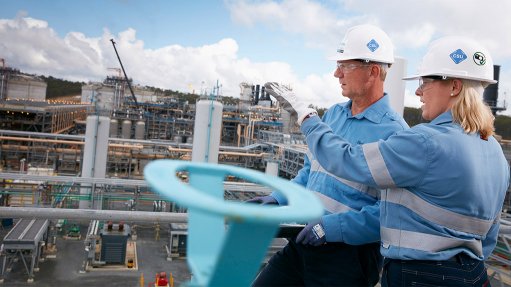
PERTH (miningweekly.com) – Oil and gas major Santos has started a concept study on a hydrogen future for the Cooper basin, and has appointed professional services firm GHD to conduct the study.
“The Cooper Basin hydrogen concept study builds on our progress towards the 1.7-million-tonne Cooper Basin carbon capture and storage (CCS) project for which Santos is targeting a final investment decision later this year, subject to a CCS methodology being approved for the Emissions Reduction Fund,” MD and CEO Kevin Gallagher said on Tuesday.
He said that natural gas could be decarbonised at its source to make “zero-emissions” or “blue” hydrogen. The carbon dioxide produced as a result can then be safely and permanently captured and stored in the same reservoirs that the gas came from.
“CCS is the fastest and most efficient route to a hydrogen economy, using less water, decarbonising natural gas at its source and eliminating Scope 3 emissions.”
“CCS enables the capture of carbon dioxide from the production of blue hydrogen, making it a ‘zero-emissions’ fuel.
“With over 65 years of experience in the safe production of natural gas, Santos has the operational knowledge, capability and infrastructure to be a leader in the creation of a hydrogen industry right here in Australia.”
Gallagher said the development of blue hydrogen from natural gas in combination with CCS would be critical in our transition to a low-carbon future.
“A CCS and hydrogen future proves that emissions reduction and job-creating resource development can work hand-in-hand.”
Santos’ proposed Moomba CCS project, in South Australia, would capture the 1.7-million tonnes of carbon dioxide currently separated from natural gas each year at the Moomba gas plant and reinject it into the same geological formations that have safely and permanently held oil and gas in place for tens of millions of years.
“With the Cooper basin’s reinjection capacity assessed at up to 20-million tonnes of carbon dioxide per year for 50 years, it has the potential to decarbonise energy at its source,” Gallagher said.
“This exciting opportunity could create high-skilled, well-paying and secure jobs, drive regional development, create new industries and deliver good outcomes for climate and the environment.”
Santos and GHD aim to complete the concept study by the end of 2020.